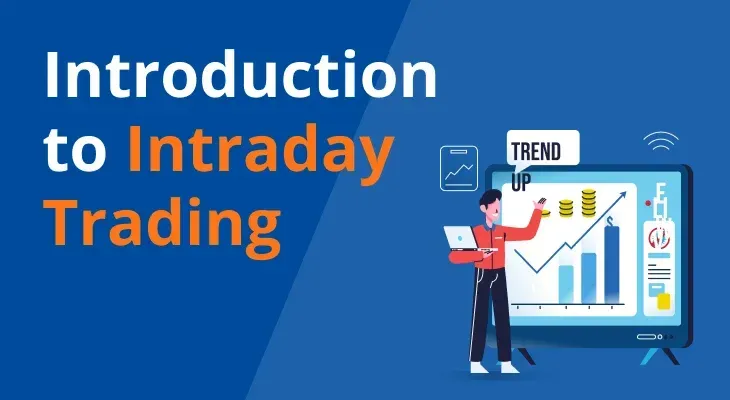
Understanding New F&O Margin Norms: A Deep Dive into SEBI’s October 2024 Circular
On October 1, 2024, SEBI released a circular titled ‘Measures to Strengthen Equity Index Derivatives Framework for Increased Investor Protection and Market Stability.’ This marked a significant shift in the regulatory landscape of the equity derivatives market. With growing retail participation, rising speculative volumes, and heightened expiry-day volatility, SEBI has proposed a phased set of reforms to enhance market stability, minimize systemic risk, and protect investors.
Why There is a Need for Revising the F&O Margin Norms
Over the past few years, the Indian derivatives market has witnessed exponential growth—driven largely by increased retail participation, technological access, and an expanding array of derivative products. However, this boom has also brought with it rising speculative trading, particularly in short-tenure index options and heavy activity on expiry days, often leading to unpredictable price swings. To mitigate potential systemic risks and ensure investor protection, SEBI felt it necessary to tighten margin norms and streamline product offerings. Also, this was done with a view to make the F&O market more stable.
What Measures Has SEBI Proposed Through the Circular?
The circular introduces six key changes, to be implemented in a phased manner to allow exchanges, brokers, and investors to adapt. The measures are:
- Increase in contract size for index derivatives
- Reduction in weekly expiry contracts
- Removal of calendar spread benefits on expiry day
- Additional margin on short option positions on expiry day
- Upfront collection of premium while buying options
- Intraday monitoring of position limits
How Do These Measures Impact Market Participants?
Sr No. | Measures | Changes | Impact on Market Participants |
1 | Increase in contract size for index derivatives | Contract size raised from Rs 5–10 lakh to Rs 15–20 lakh | Margin requirement per lot increases significantly (2x to 3x), impacting affordability for retail traders |
2 | Reduction in weekly expiry contracts | Only one benchmark index per exchange allowed for weekly expiries | NSE discontinued weekly contracts on Bank Nifty, Nifty Financial Services, Nifty Midcap Select, Nifty Next 50; BSE dropped BANKEX and Sensex 50 |
3 | Removal of calendar spread margin benefit on expiry day | No margin benefit for calendar spreads on expiry day. For example, the calendar spread margin benefit available on say monthly Expiry 27-FEB-25 and 27-MAR-25 will be withdrawn on expiry day i.e. 27-FEB-25 | Traders need to maintain full margin for both legs of the spread, increasing margin requirement on expiry day |
4 | Additional margin on short options on expiry day | 2% Extreme Loss Margin (ELM) on short options on expiry day | Traders with short positions will need to keep extra margin on expiry day, accounting for expiry-day volatility |
5 | Upfront collection of premium while buying options | Full premium must be paid upfront | No impact on m.Stock clients—this was already implemented |
6 | Intraday monitoring of position limits | Exchanges to monitor intraday limits instead of end-of-day | Market participants must now ensure real-time compliance with position limits to avoid penalties |
SEBI’s Key Changes – Explained Simply
SEBI has introduced six important changes. These will be rolled out step by step. Here's a simple explanation of each:
Lot Size Increased
- What’s Changing: Minimum contract size for index F&O (like Nifty) has been increased from ₹5–10 lakh to ₹15–20 lakh.
- Why It Matters: You’ll now need more money to trade 1 lot. This reduces overtrading and keeps out extremely high-risk trades.
Fewer Weekly Expiries
- What’s Changing: Each exchange can now offer weekly expiry only on one main index.
- Why It Matters: This means fewer expiry days, leading to less volatility and panic trading. For example, NSE has removed weekly expiry for Bank Nifty and other smaller indices.
No Margin Benefit on Expiry Day for Calendar Spreads
- What’s Changing: If you are holding a spread (like Feb and March contracts), you won’t get margin benefit on expiry day.
- Why It Matters: You’ll need full margin for both legs on that day. This avoids sudden losses during high movement.
Extra Margin for Short Options on Expiry Day
- What’s Changing: If you have short (sold) options that expire today, an extra 2% margin will be charged.
- Why It Matters: Expiry days can be unpredictable. This rule ensures you have enough cushion for big moves.
Pay Full Premium While Buying Options
- What’s Changing: When buying options, the full premium must be paid upfront.
- Why It Matters: This is already followed by most brokers like m.Stock. It avoids buyers taking positions they can’t afford.
Intraday Monitoring of Positions
- What’s Changing: Exchanges will now check F&O position limits throughout the day, not just at the end.
- Why It Matters: Traders can no longer exceed their limits even for a few minutes. This improves discipline.
How Brokers and Exchanges Will Adapt to These Norms
SEBI has allowed phased implementation to help the ecosystem adjust. The rollout schedule is as follows:
Sr No. | Measures | Effective From |
1 | Increase in contract size for index derivatives | November 20, 2024 |
2 | Reduction in weekly expiry contracts | November 20, 2024 |
3 | Additional margin on short option position on expiry day | November 20, 2024 |
4 | Removal of calendar spread benefits on expiry day | February 1, 2025 |
5 | Upfront collection of premium while buying options | February 1, 2025 |
6 | Intraday monitoring of position limits | April 1, 2025 |
What Should You Do Now?
If you’re a retail trader, here’s what to keep in mind:
- You may need more funds to trade the same quantity as before.
- Be careful on expiry days—risk is higher, and margin rules are tighter.
- Don’t overtrade. Use proper risk management.
If you’re a broker, you’ll need to:
- Update your systems and risk checks,
- Help clients understand the changes.
For institutions, these changes are manageable—but expiry-day margins and real-time checks still need attention.
Conclusion
SEBI’s proposed measures aim to bring about structural discipline in the rapidly evolving F&O market. While these norms will reduce speculative leverage and volatility, especially around expiry days, they also significantly raise the cost of participation—particularly for retail investors. Overall, the reforms are designed to shift the market toward sustainable, risk-aware trading behaviour and enhance the long-term health of India’s derivatives ecosystem.


